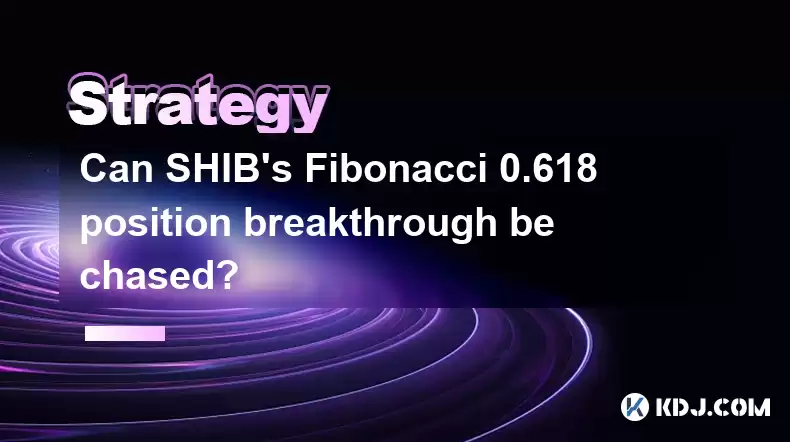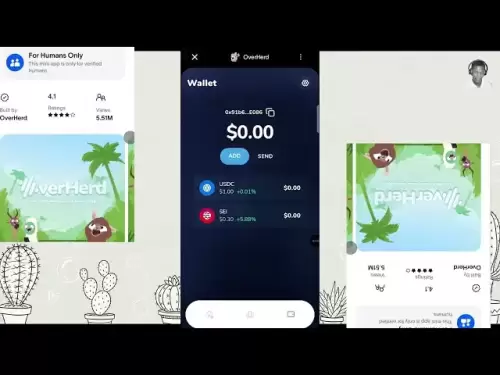-
 Bitcoin
Bitcoin $114200
0.00% -
 Ethereum
Ethereum $3637
0.56% -
 XRP
XRP $2.950
-2.01% -
 Tether USDt
Tether USDt $0.9999
0.02% -
 BNB
BNB $761.0
0.55% -
 Solana
Solana $164.1
-1.38% -
 USDC
USDC $0.9999
0.02% -
 TRON
TRON $0.3332
0.36% -
 Dogecoin
Dogecoin $0.2012
-0.52% -
 Cardano
Cardano $0.7261
-1.41% -
 Hyperliquid
Hyperliquid $37.62
-2.13% -
 Stellar
Stellar $0.3930
-2.65% -
 Sui
Sui $3.441
-0.16% -
 Bitcoin Cash
Bitcoin Cash $563.8
0.70% -
 Chainlink
Chainlink $16.50
0.09% -
 Hedera
Hedera $0.2424
-0.14% -
 Ethena USDe
Ethena USDe $1.001
0.01% -
 Avalanche
Avalanche $22.20
0.00% -
 Litecoin
Litecoin $118.0
-2.48% -
 UNUS SED LEO
UNUS SED LEO $8.991
0.12% -
 Toncoin
Toncoin $3.195
-3.87% -
 Shiba Inu
Shiba Inu $0.00001217
0.12% -
 Uniswap
Uniswap $9.674
-0.21% -
 Polkadot
Polkadot $3.633
1.00% -
 Monero
Monero $295.3
-0.82% -
 Dai
Dai $0.9999
0.00% -
 Bitget Token
Bitget Token $4.321
-0.41% -
 Cronos
Cronos $0.1392
0.73% -
 Pepe
Pepe $0.00001027
-0.89% -
 Aave
Aave $258.5
0.32%
Can SHIB's Fibonacci 0.618 position breakthrough be chased?
SHIB traders often use the 0.618 Fibonacci level to predict price movements; a breakout here, confirmed by volume and other indicators, can signal strong trends.
Apr 22, 2025 at 10:01 am

Introduction to SHIB and Fibonacci Retracement
Shiba Inu (SHIB) is a popular cryptocurrency that has garnered significant attention in the crypto community due to its meme-inspired origins and substantial market cap. One of the technical analysis tools frequently used by traders to predict future price movements is the Fibonacci retracement. This tool helps identify potential reversal levels on a price chart. A key Fibonacci level often discussed is the 0.618 position, which is considered a significant support or resistance level.
Understanding the 0.618 Fibonacci Level
The 0.618 Fibonacci level, also known as the golden ratio, is derived from the Fibonacci sequence and is widely used in financial markets to identify potential support and resistance levels. In the context of SHIB, if the price breaks through this level, it could signal a strong bullish or bearish trend depending on the direction of the breakout. Traders often watch this level closely to make informed trading decisions.
Analyzing SHIB's Price Movement
To understand whether SHIB's breakout at the 0.618 Fibonacci level is worth chasing, it's crucial to analyze its recent price movements. SHIB's price chart can be examined using various timeframes, such as daily, weekly, or monthly charts. By identifying the swing highs and lows, traders can draw the Fibonacci retracement levels and pinpoint the 0.618 position.
Factors to Consider Before Chasing a Breakout
Before deciding to chase SHIB's breakout at the 0.618 Fibonacci level, several factors need to be considered:
- Volume: A breakout accompanied by high trading volume is generally considered more reliable than one with low volume.
- Market Sentiment: The overall sentiment in the cryptocurrency market can influence SHIB's price movement. Positive news or developments can drive the price up, while negative news can lead to a decline.
- Technical Indicators: Other technical indicators, such as moving averages, RSI, and MACD, can provide additional insights into the strength of the breakout.
- Risk Management: It's essential to have a clear risk management strategy in place, including setting stop-loss orders to mitigate potential losses.
Steps to Identify and Trade the 0.618 Breakout
If you decide to chase SHIB's breakout at the 0.618 Fibonacci level, here are the steps to follow:
- Identify the Swing High and Low: On a price chart, identify the most recent significant swing high and low points.
- Draw the Fibonacci Retracement: Use a charting tool to draw the Fibonacci retracement levels from the swing high to the swing low or vice versa. The 0.618 level will be displayed on the chart.
- Monitor the Price Action: Watch closely as the price approaches the 0.618 level. If the price breaks through this level with strong volume, it could be a signal to enter a trade.
- Confirm with Other Indicators: Before entering a trade, confirm the breakout with other technical indicators to increase the probability of success.
- Set Entry and Exit Points: Determine your entry point just after the breakout and set a stop-loss order to manage risk. Also, identify a potential target for taking profits.
Real-World Examples of SHIB's Fibonacci Breakouts
To better understand how SHIB's price might behave at the 0.618 Fibonacci level, it's helpful to look at past examples. For instance, if SHIB experienced a significant rally followed by a retracement, and the price subsequently broke through the 0.618 level, it could have led to further gains. Analyzing these historical patterns can provide valuable insights into potential future movements.
The Role of Market Liquidity and Order Flow
Market liquidity and order flow are crucial factors that can impact the success of chasing a breakout at the 0.618 Fibonacci level. High liquidity ensures that large orders can be executed without significantly impacting the price, while understanding order flow can help traders anticipate potential price movements. Monitoring the order book and liquidity pools can provide additional information to make more informed trading decisions.
Psychological Aspects of Trading Breakouts
Trading breakouts, especially at significant Fibonacci levels, can be emotionally challenging. FOMO (Fear of Missing Out) and greed can lead traders to make impulsive decisions. It's important to maintain discipline and stick to a well-defined trading plan. Setting realistic expectations and understanding that not all breakouts will be successful can help manage the psychological aspects of trading.
Frequently Asked Questions
Q: Can the 0.618 Fibonacci level be used for both long and short trades?
A: Yes, the 0.618 Fibonacci level can be used for both long and short trades. If the price breaks above the 0.618 level, it could be a signal to enter a long trade, while a break below this level might indicate a potential short trade opportunity.
Q: How often should I check the SHIB price chart to monitor a potential breakout?
A: The frequency of checking the SHIB price chart depends on your trading strategy and time horizon. For short-term traders, monitoring the chart every few hours or even more frequently might be necessary. Long-term investors might check the chart daily or weekly.
Q: Are there other Fibonacci levels I should pay attention to besides the 0.618 level?
A: Yes, other significant Fibonacci levels include 0.382, 0.500, and 0.786. These levels can also act as potential support or resistance points and should be considered in your analysis.
Q: Can external factors influence the effectiveness of the 0.618 Fibonacci level for SHIB?
A: Yes, external factors such as regulatory news, macroeconomic events, and developments within the SHIB ecosystem can influence the price movement and the effectiveness of the 0.618 Fibonacci level. It's important to stay informed about these factors when trading.
Disclaimer:info@kdj.com
The information provided is not trading advice. kdj.com does not assume any responsibility for any investments made based on the information provided in this article. Cryptocurrencies are highly volatile and it is highly recommended that you invest with caution after thorough research!
If you believe that the content used on this website infringes your copyright, please contact us immediately (info@kdj.com) and we will delete it promptly.
- Binance, CZ, and the FTX Fallout: The $1.8 Billion Question
- 2025-08-06 18:30:12
- Brendan Rodgers, Celtic, and the Greg Taylor Role: A Tactical Conundrum
- 2025-08-06 18:50:12
- Coinbase Stock, Investment, and Earnings: Navigating Crypto's Tides
- 2025-08-06 18:55:54
- DALPY Coin: Investor Buzz Swirls Around Upcoming 'Game-Changing' Features
- 2025-08-06 18:30:12
- BlockchainFX: Your Ticket to 1000x Crypto Gains in '25?
- 2025-08-06 19:30:12
- Dogecoin Price, Technical Indicators, and Trader Sentiment: A NYC Perspective
- 2025-08-06 19:35:12
Related knowledge

How to avoid common crypto investment mistakes?
Jul 13,2025 at 01:35am
Understanding the Risks of Crypto InvestmentInvesting in cryptocurrency can be highly rewarding, but it also comes with significant risks. One of the ...

What is a long-short crypto strategy?
Jul 15,2025 at 10:56am
Understanding the Basics of a Long-Short Crypto StrategyA long-short crypto strategy is an investment approach where traders simultaneously take long ...

What is a long-short crypto strategy?
Jul 11,2025 at 01:28pm
Understanding the Basics of Long-Short Crypto StrategyA long-short crypto strategy is an investment approach where traders take both long and short po...

How to use the RSI indicator for crypto?
Jul 12,2025 at 03:56pm
Understanding the RSI Indicator in Cryptocurrency TradingThe Relative Strength Index (RSI) is a momentum oscillator used to measure the speed and chan...

Is copy trading a good strategy for crypto beginners?
Jul 12,2025 at 08:28am
Understanding Copy Trading in the Cryptocurrency MarketCopy trading is a strategy where novice traders replicate the trades of experienced investors a...

How to build a crypto portfolio with $1000?
Jul 13,2025 at 08:14pm
Understanding the Basics of Cryptocurrency InvestmentBuilding a crypto portfolio with $1000 starts with understanding the fundamentals of cryptocurren...

How to avoid common crypto investment mistakes?
Jul 13,2025 at 01:35am
Understanding the Risks of Crypto InvestmentInvesting in cryptocurrency can be highly rewarding, but it also comes with significant risks. One of the ...

What is a long-short crypto strategy?
Jul 15,2025 at 10:56am
Understanding the Basics of a Long-Short Crypto StrategyA long-short crypto strategy is an investment approach where traders simultaneously take long ...

What is a long-short crypto strategy?
Jul 11,2025 at 01:28pm
Understanding the Basics of Long-Short Crypto StrategyA long-short crypto strategy is an investment approach where traders take both long and short po...

How to use the RSI indicator for crypto?
Jul 12,2025 at 03:56pm
Understanding the RSI Indicator in Cryptocurrency TradingThe Relative Strength Index (RSI) is a momentum oscillator used to measure the speed and chan...

Is copy trading a good strategy for crypto beginners?
Jul 12,2025 at 08:28am
Understanding Copy Trading in the Cryptocurrency MarketCopy trading is a strategy where novice traders replicate the trades of experienced investors a...

How to build a crypto portfolio with $1000?
Jul 13,2025 at 08:14pm
Understanding the Basics of Cryptocurrency InvestmentBuilding a crypto portfolio with $1000 starts with understanding the fundamentals of cryptocurren...
See all articles

























































































